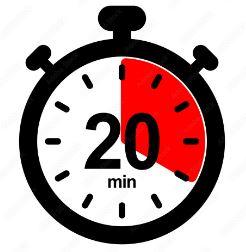Lose weight… eat slowly!
In general, a meal in less than 30 minutes rarely allows for the limitation of food intake due to the unconscious intervention of the brain. That is why, to lose weight, it is important to eat slowly.
There is a natural braking system against overeating: the satiety signal that warns the brain when the stomach is full. Unfortunately, it is a signal that comes too late, which leads to overeating. Not too long ago, the French spent twice as much time at the table as the Americans. The new generations tend to adopt the same rhythm as them as well as their obesity epidemic.
1. Understanding the Satiety Signal: How Nature Helps Limit Our Food Intake
To limit food intake, nature has ingeniously equipped us all with what is called the “satiety” signal. We could use more understandable synonyms such as “signal of fullness, satisfaction, or saturation,” but it is a term you will often come across in most articles on the subject. The satiety signal is an order from the brain that decides that we have eaten too much.
If the hunger signal, which depends on our blood sugar level, is quite precise and especially very rapid, the one that decides to stop the festivities is quite slow and complex. It works rather well from birth but becomes disturbed with age. The consequence is that the satisfaction that signals the end of a meal only occurs when we have taken more food than necessary, probably because this signal is too late. Perhaps a remnant of our archaic adaptability to famine?

2. Twenty (20) minutes, is not enough time:
This period, which can be evaluated between 10 and 20 minutes, is the most dangerous time, while simply waiting is enough to make the irresistible urge to get a second serving to disappear magically. Managing this satiety signal also advocates for a meal composition in three parts: starter, main course, and dessert. Not just a single main course, which, while waiting for its preparation, is the best ally for taking “bread and butter”, a classic of midday restaurants.

In concrete terms, before giving in to the temptation to take another serving of a dish, one should wait at least 10 minutes. If that’s not possible, vegetables or salad are a last resort.
Eating slowly helps digestion. Keeping the food in the mouth for longer gives the teeth a chance to do their job, which is not just to make the smile charming, but to tear, grind, and mix. This will prevent the stomach from having to do it, as its real role is to bombard the mush sent by the mouth, teeth, and saliva with acid.
3. Better appreciate food:
Eating slowly allows us to better appreciate food, which is a significant advantage when eating less. This is not a medical observation, but if you look around, you’ll notice that most slender people eat slowly.
The “pea test” is revealing. Put a plate of peas in front of guests and observe their first move. The slender person picks up a fork, while the larger person, if possible, uses a spoon or uses a piece of bread. The slender person eats their peas almost one by one, while the larger person “pushes” them by lifting the plate.

Read Also: What are low fiber foods?
To study more: Click here!









